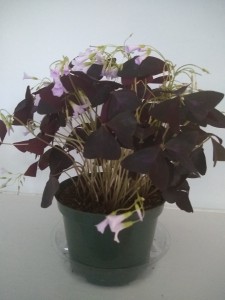 Cold, rainy days on the edge of spring are a big challenge. My gardener’s heart wants to be outside, clearing debris, uncovering the green shoots and pruning the roses. Common sense says that the beds are muddy, the leaves and debris are wet, and the return on garden effort will be minimal. I could clean tools, or even better, clean my house, but that sounds about as appealing as onion grass in a sleet storm. The only viable coping strategy is a trip to the garden center. Last week I opted for that form of salvation.
Cold, rainy days on the edge of spring are a big challenge. My gardener’s heart wants to be outside, clearing debris, uncovering the green shoots and pruning the roses. Common sense says that the beds are muddy, the leaves and debris are wet, and the return on garden effort will be minimal. I could clean tools, or even better, clean my house, but that sounds about as appealing as onion grass in a sleet storm. The only viable coping strategy is a trip to the garden center. Last week I opted for that form of salvation.
The trip was a success and raised my spirits. The garden center greenhouse was warm, humid and full of color and greenery. The first primroses of the season were on the pallets, as were a plethora of orchids. Even the succulents looked lively. I could have opted to spend half an hour soaking up the comforting atmosphere and call it a good day, but I felt compelled to take comfort one step further and buy something. St. Patrick’s Day is right around the corner, which must be why I skipped the orchids, primroses and exuberant African violets and went straight for the shamrocks. Even if those particular hothouse shamrocks were completely unrelated to the genus Trifolium, which is home to common field clover and the rare four-leaf clover, the purchase felt right for the season.
My new shamrock is a variety of Oxalis triangularis with big, bold shamrock leaves, each composed of three triangular segments. When you look at the whole plant, the leaves look more like a flock of butterflies than a patch of clover, but no matter. The overall effect is gorgeous.
I bought an unlabeled cultivar that features vivid dark purple leaves and dainty, pinkish-white flowers shaped like elongated bells. The leaves, which sprout atop wiry stems, have just a hint of lighter purple at the heart of each one, and are at least equal in beauty to the flowers. Rising in a mound that reaches eight inches over the top of the six-inch diameter pot, my new shamrock plant makes a beautiful spectacle of itself.
Ornamental oxalis like mine are part of the large Oxalidaceae family, home to at least 700 species, mostly native to South Africa and parts of South America. The culinary and medicinal herb sorrel, renowned as a spring tonic and sometime soup ingredient, is related. The sour taste of sorrel comes from the oxalic acid in the leaves, which is also present in shamrock foliage. If you have a cat, dog or other pet that likes to nibble on foliage, keep the plants out of the pet’s way.
My purple-leafed shamrock is only one of the choices available to house plant lovers. Oxalis tetraphylla ‘Iron Cross’ features a four-leafed configuration. Each green leaf bears a dark, maroon blotch at the base, which morphs into a cross shape when joined with the other three leaves. It is quite striking. ‘Charmed Jade’ is another Oxalis triangularis variety, with three-leafed, silvery-green foliage and pink flowers.
It is hard to imagine anything more dramatic than the purple-leafed oxalis, but Oxalis spiralis ‘Aurea’, with its green, yellow and apricot clover-like foliage paired with yellow flowers is downright flashy.
Ornamental oxalis varieties grow from potato-like tubers and are tender in cold winter climates. The shamrock that I bought last week in full bloom will eventually drop its petals and leaves and go into dormancy. When that happens, I will probably forget everything I know and give in to an orgy of guilt over killing the plant. Then sense will reassert itself and I will remember that this dormancy cycle is normal for shamrocks and may happen two or more times during the course of a year. If your lovely shamrock goes dormant, the key is to stay calm and carry on. Stop watering and fertilizing until new growth appears, at which time you should resume the normal care regime, using a balanced houseplant fertilizer diluted according to manufacturer’s directions.
When warm weather rolls around, your plant can go outside in a partly shaded location. Keep the soil moist, but not waterlogged and be sure to return the plant to the house when night temperatures begin to fall into the fifties.
Ornamental shamrocks may or may not bring you the luck of the Irish, but they will certainly improve your windowsills or other sunny indoor spaces. Many garden centers and other retailers carry oxalis now, just in time for St. Patrick’s Day. If you can’t find one locally, go to Logee’s, 141 North Street, Danielson, CT 06239; (860) 774-8038; www.logees.com. Free print catalog.
